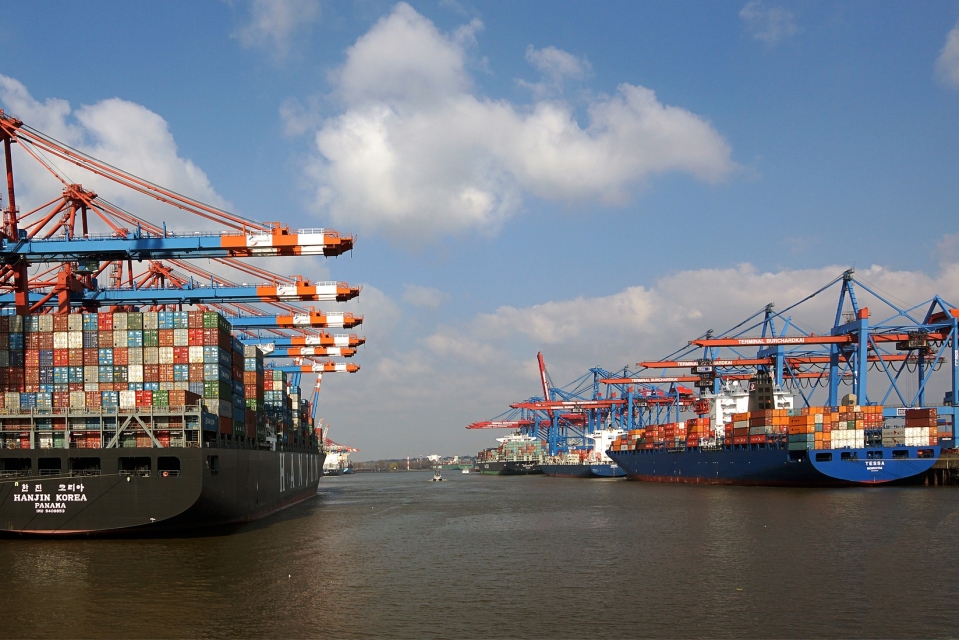Researchers from Chalmers University of Technology, Sweden, have found that scrubber water from ships accounts for more than ninety per cent of the environmentally hazardous metals and PAHs in port waters. The team looked at four port environments for their research.
The researchers say that the combined emissions of metals and other environmentally hazardous substances from ships is putting the marine environment at risk.
‘The results speak for themselves. Stricter regulation of discharge water from scrubbers is crucial to reduce the deterioration of the marine environment,’ says Anna Lunde Hermansson, a doctoral student at the Department of Mechanics and Maritime Sciences at Chalmers.
She adds: ‘A single ship is responsible for many different types of emissions. These include greywater and blackwater, meaning discharges from showers, toilets and drains, antifouling paint, and scrubber discharge water. That is why it’s important to look at the cumulative environmental risk in ports.’
Also read: Coanda effect can pave the way for wind-powered ships
Acidification and other contaminants
A scrubber can be described as a cleaning system for the exhaust gases. Having such a system on board means that ships can comply with the requirements introduced by the International Maritime Organization (IMO) in 2020.
The only problem is that the water not only takes up the sulphur from the exhaust gases, leading to acidification of the scrubber water, but also other contaminants such as heavy metals and toxic organic compounds. The contaminated scrubber water is then often pumped directly into the sea.
Also read: Open-loop scrubbers acidify North Sea
Contaminant concentrations from five different sources
‘There is no cleaning step in between – so up to several hundred cubic metres of heavily contaminated water can be pumped out every hour from a single ship. Although new guidelines for environmental risk assessments (ERAs) of scrubber discharges are in progress, the ERAs still only assess one source of emissions at a time, which means that the overall assessment of the environmental risk is inadequate,’ says Lunde Hermansson.
In this new study, the researchers at Chalmers looked at four different types of port environments to determine contaminant concentrations from five different sources. Actual data from Copenhagen and Gdynia were used for two of the ports. They were selected due to high volumes of shipping traffic, and a substantial proportion of these ships having scrubbers.
The results showed that the cumulative risk levels in the ports were, respectively, five and thirteen times higher than the limit that defines acceptable risk.
Port descriptions used internationally in ERAs were utilised for the other two port environments. One of these environments has characteristics typical of a Baltic Sea port, while the other represents a European port with efficient water exchange due to a large tidal range.
Also read: CE Delft: Scrubbers have a lower climate impact than low-sulphur fuels
3 out of 4 port environments prone to unacceptable risks
The researchers found that three out of the four port environments were prone to unacceptable risks according to the assessment model used. They also saw that it was emissions from antifouling paint and scrubber discharge water that accounted for the highest levels of hazardous substances in the marine environment and had the highest contribution to the risk. More than ninety per cent of the environmentally hazardous metals and PAHs (polycyclic aromatic hydrocarbons) came from scrubber discharge water, while antifouling paints accounted for the biggest load of copper and zinc.
‘If you look at only one emissions source, the risk level for environmental damage may be low or acceptable. But if you combine multiple individual emissions sources, you get an unacceptable risk. The marine organisms that are exposed to contaminants and toxins don’t care about where the contaminants come from, it is the total load that causes the damage,’ says Lunde Hermansson.
The only port environment that showed an acceptable risk in the researchers’ ERA was the model with the highest water exchange per tidal period, meaning that a high volume of water is exchanged in the port as the tide moves in and out. But the researchers stress that contaminated water in this case is only transported elsewhere.
Also read: Half of new bulk carriers is fitted with a scrubber
Sweden working on scrubber water discharge ban
Since the mid-2010s, the number of ships with scrubbers installed has increased. In a study conducted in 2018, it was found that there were 178 ships with scrubbers operating in the Baltic Sea. Today, the researchers estimate that there is triple that number. Globally, there are about 5000 such ships, representing around five per cent of the total fleet.
The Swedish Agency for Marine and Water Management and the Swedish Transport Agency have submitted a proposal to the Swedish Government to prohibit the discharge of scrubber water into internal waters, that is, waters that lie within the Swedish archipelago.
‘It’s a step in the right direction, but we would have liked to see a stronger ban that extends across larger marine areas, while we also understand the challenge for individual countries to regulate international shipping,’ states Erik Ytreberg, an associate professor at the Department of Mechanics and Maritime Sciences at Chalmers.
Also read: How methanol kits for diesel engines allow for quick conversions








